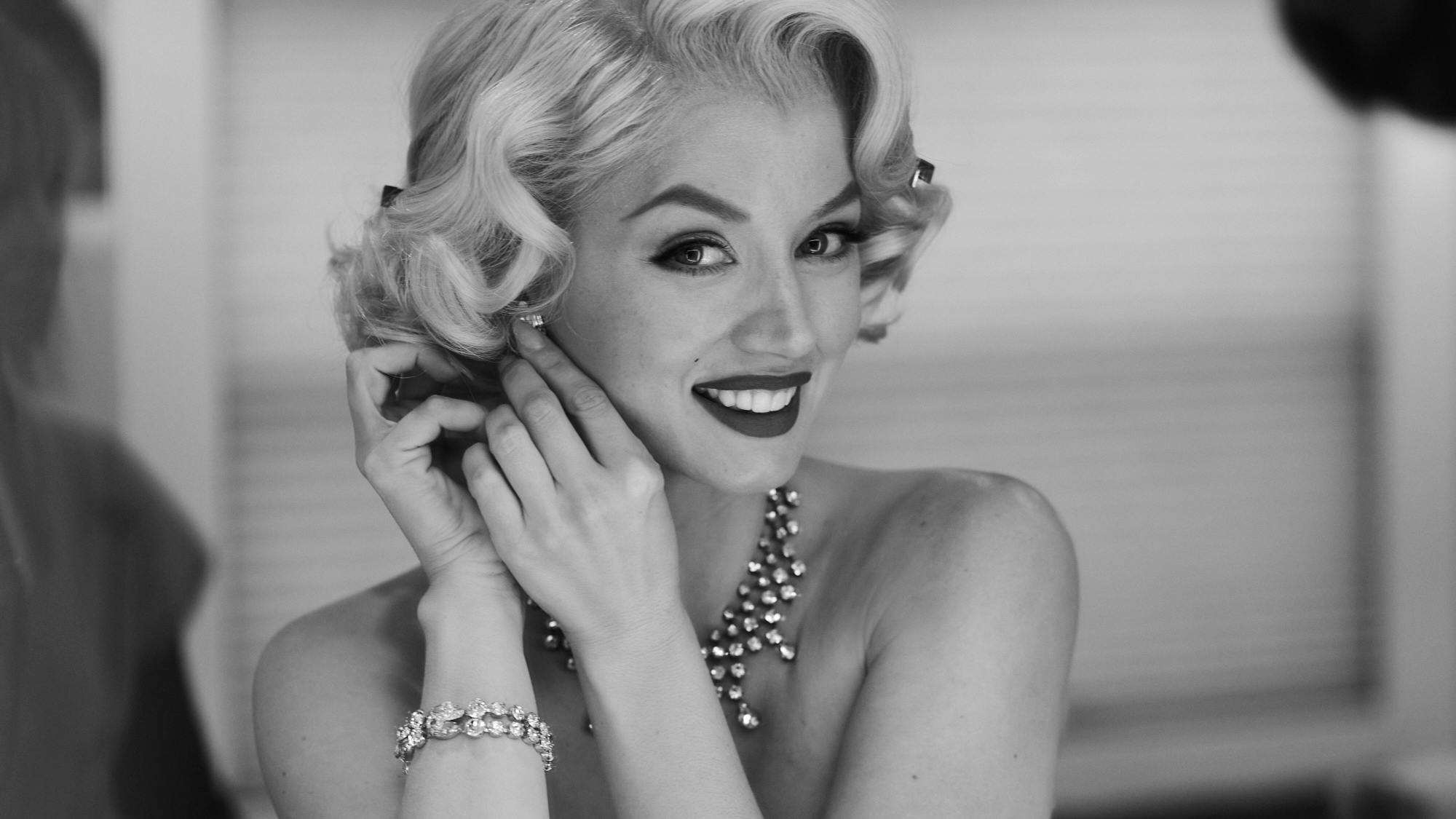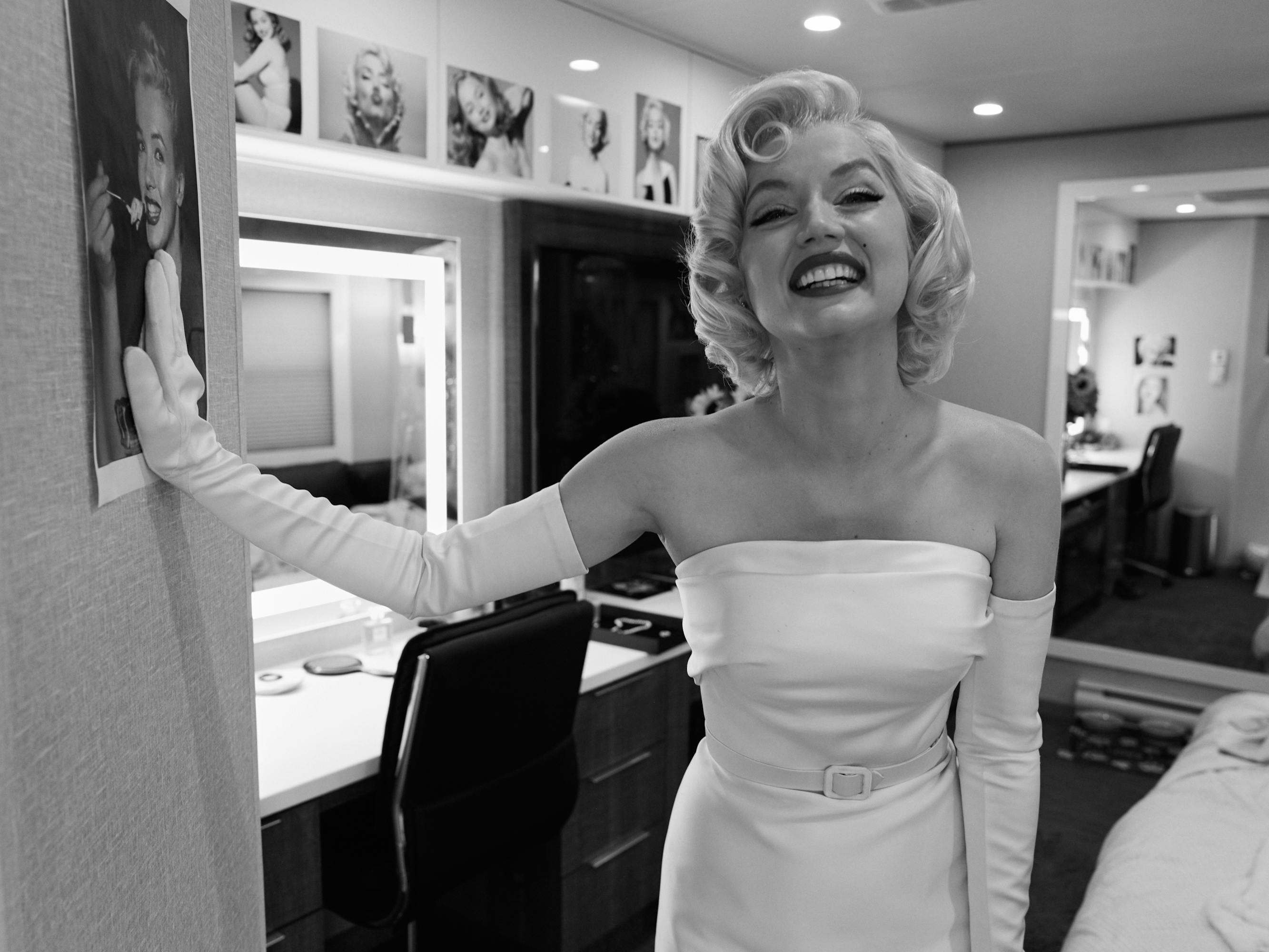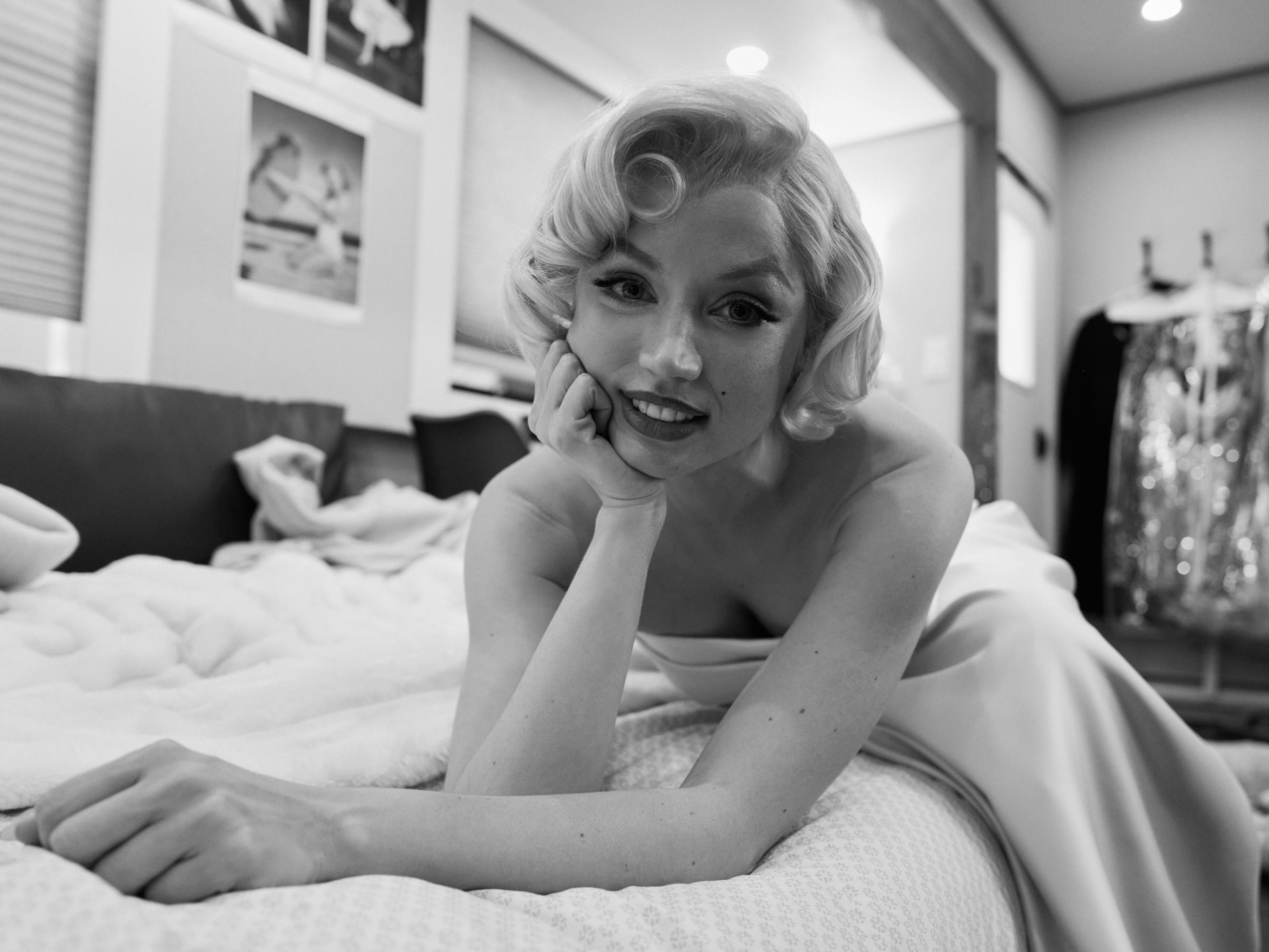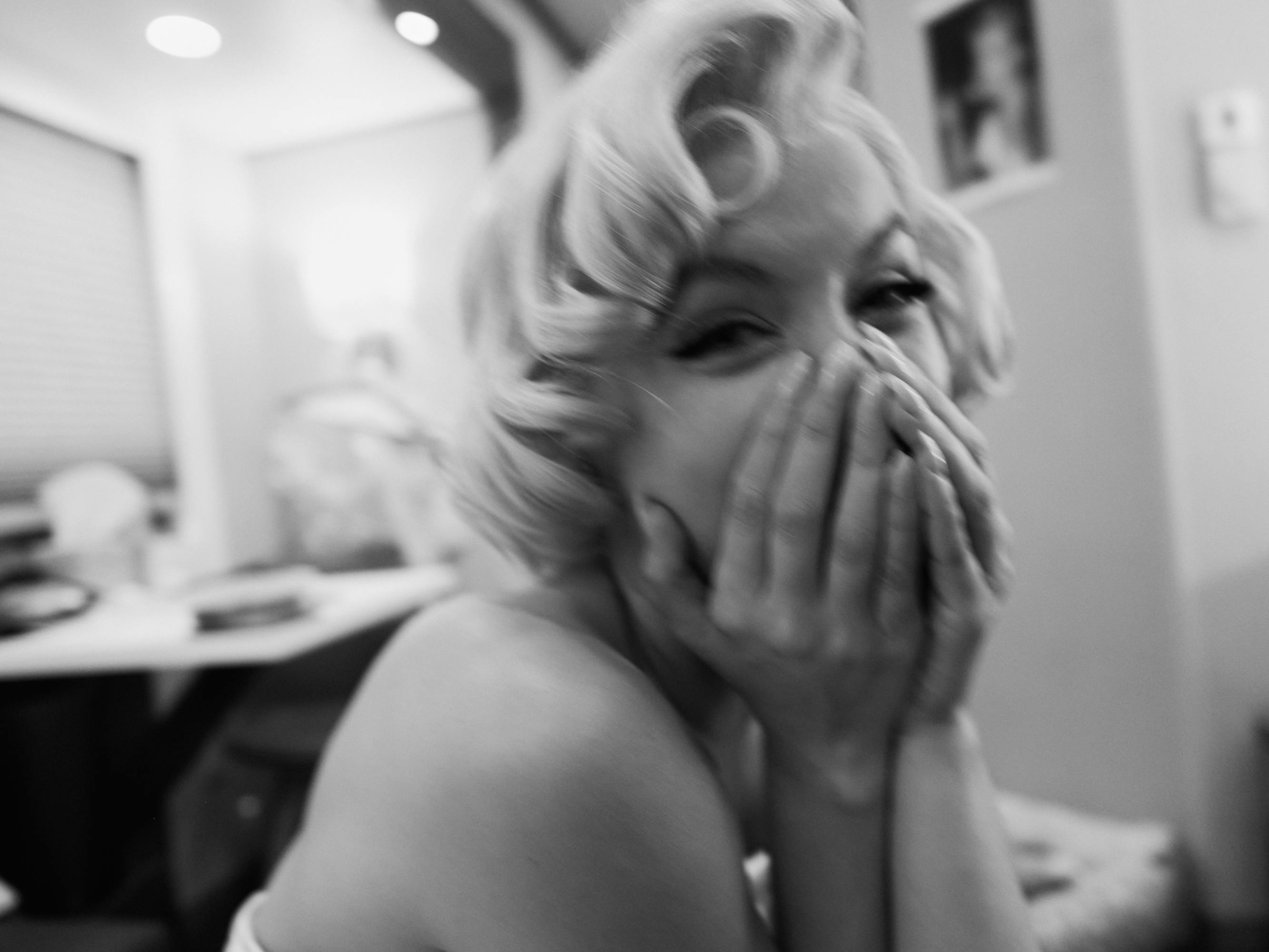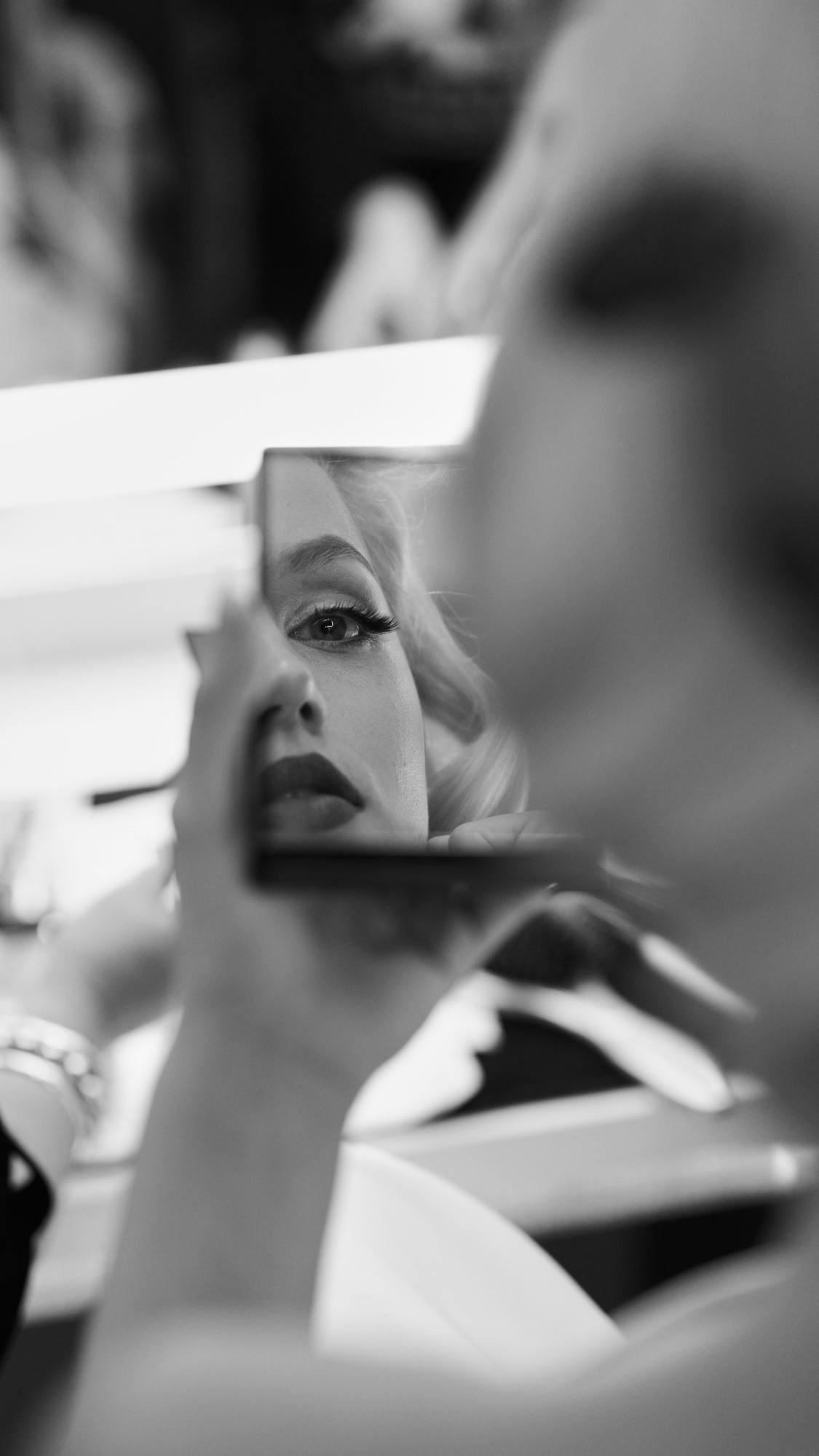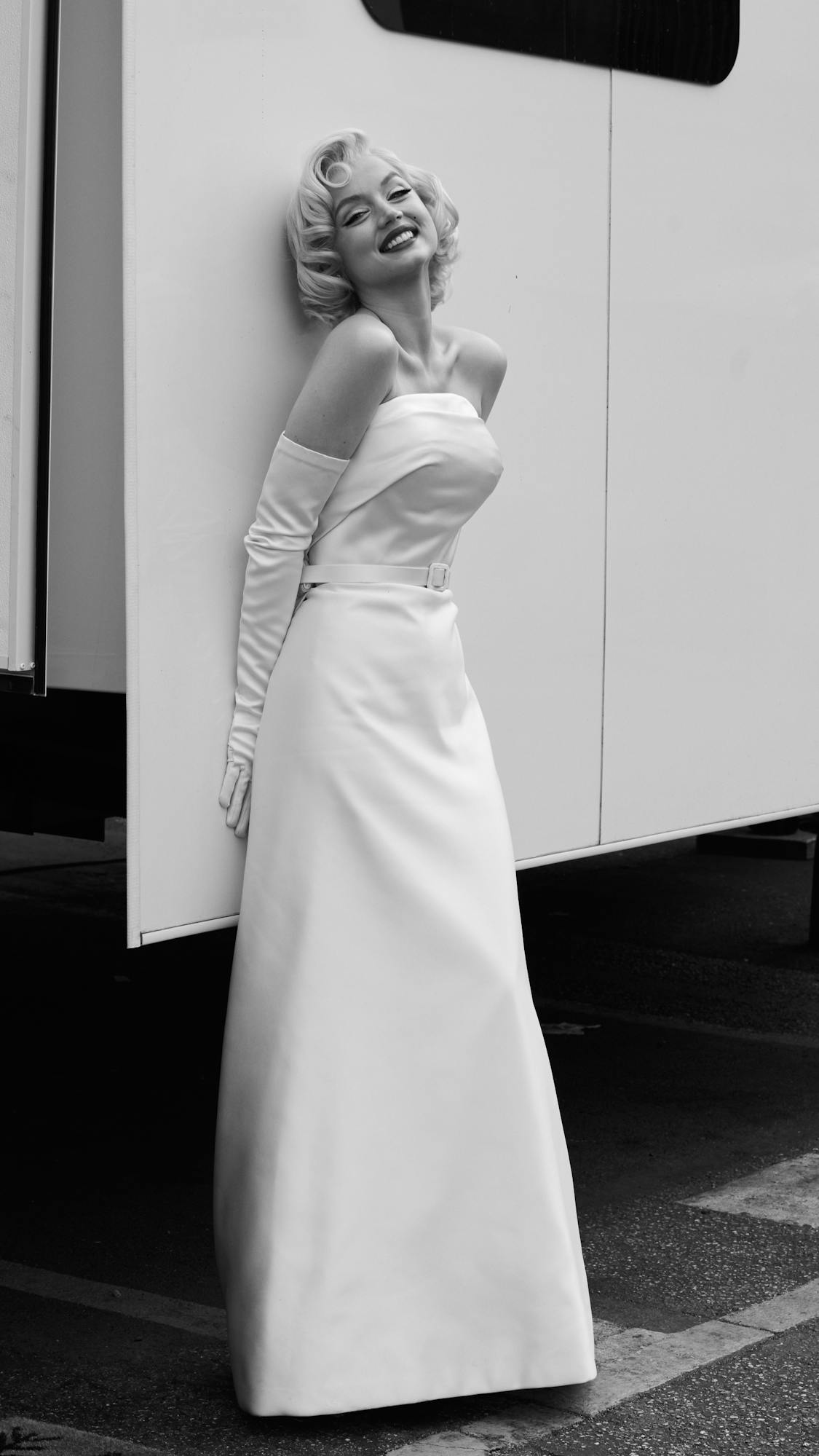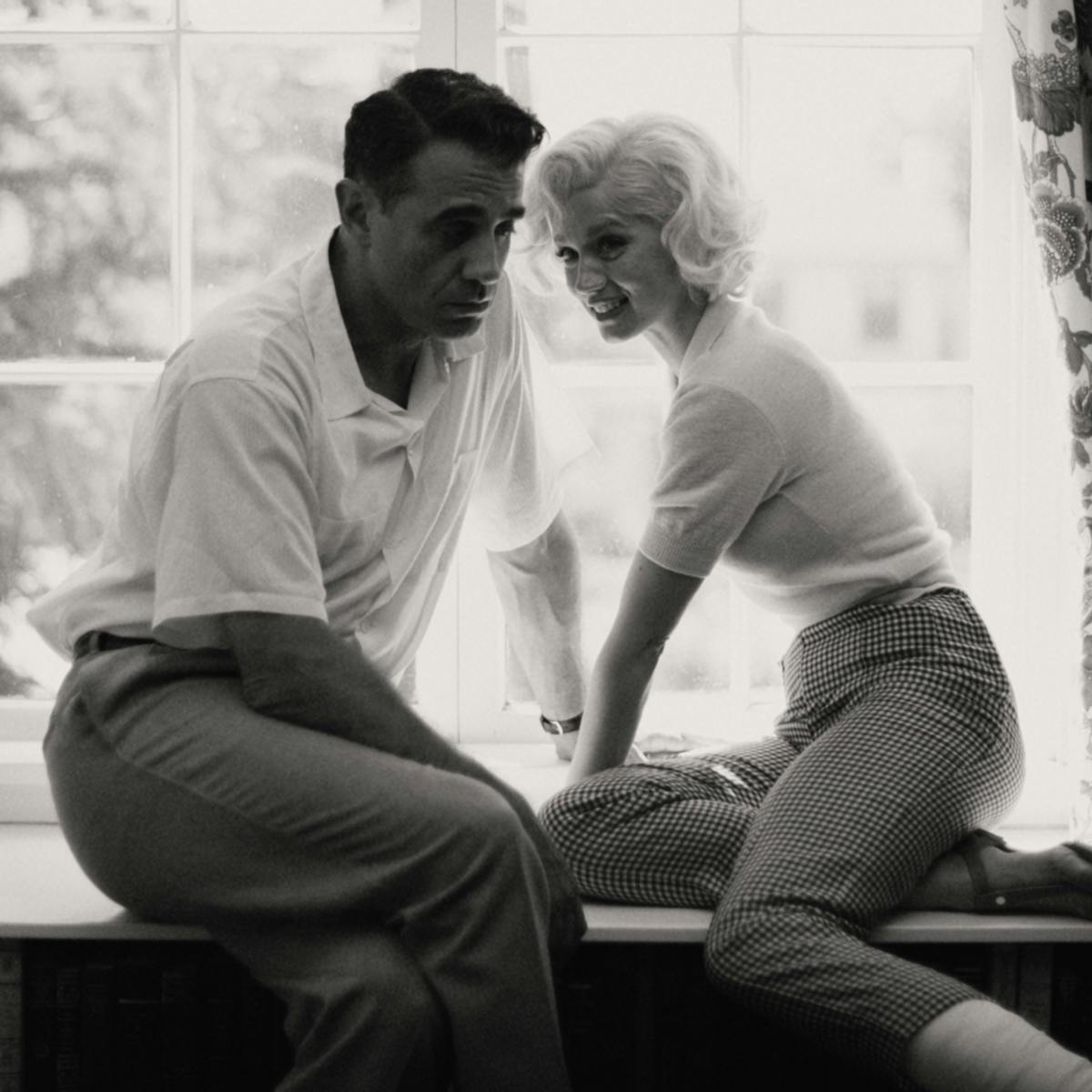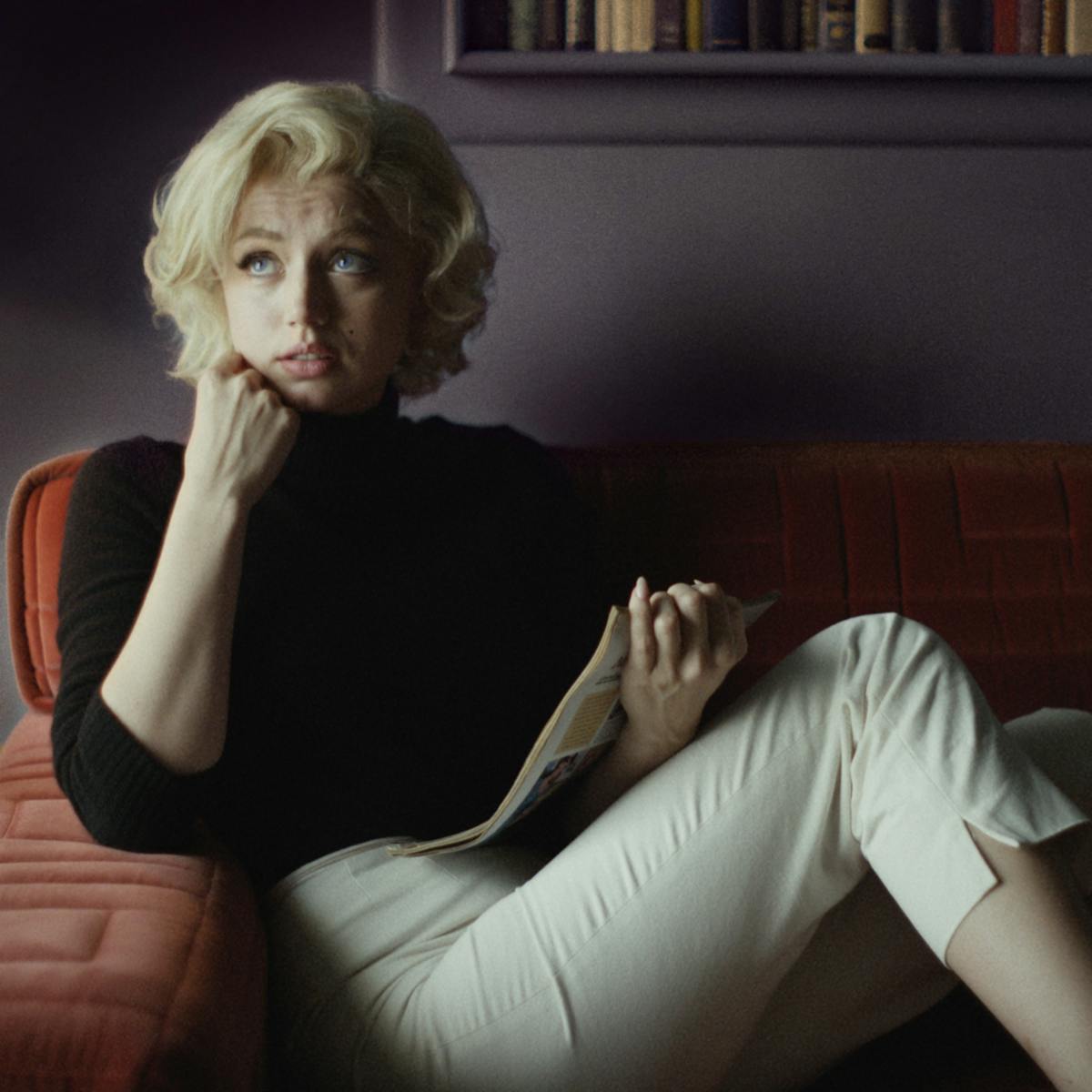The actor stuns in Andrew Dominik’s inventive retelling of Joyce Carol Oates’s novel, Blonde.
Manifesting Marilyn Monroe is no easy feat. When Ana de Armas, the lead of Andrew Dominik’s new film, Blonde, first saw herself as Monroe — wig, pout, dress, and all — she cried. The whole team cried, too. The transformation had involved a deep study of Monroe’s legacy and work, as well as months of vocal coaching to get her affectations — the rounded “o”s, the breathy tone, the smile — just right. It also combined the painstaking work of various departments. “I was incomplete until I was in full costume and hair and makeup and had warmed up my voice,” de Armas says. The process took about three hours daily and required, rather than slapping Marilyn’s wares onto de Armas, finding Marilyn within the Cuban-born actress: the right wig density for her dark locks, the perfect shade of lipstick, the precise number of lashes. “Every day that we got a specific look, whether it was more Marilyn or more Norma, it was a celebration.” she says. “It was also terrifying because we had to do it all over again the next day.”
Drawing inspiration from Joyce Carol Oates’s 2000 novel, Dominik aimed to both resurrect the Monroe of our collective memory and to create a version of Norma Jeane Mortenson that begs to be understood. De Armas didn’t take the task lightly: “As much as I had a responsibility to show the character that we all know, I felt equally responsible for showing emotional proof of humanity to this person.”
As soon as she learned that she’d gotten the role, de Armas was equal parts excited and terrified. “Andrew had warned me to be careful with this movie because it had broken his heart many times before,” she says. Dominik had been working to get it made for 11 years at that point. And even though the project hadn’t been greenlit yet, de Armas was all in. She knew it would be demanding, and potentially heartbreaking, but that was the hook for her. “As an actress, you don’t get roles like this. You don’t get to live an experience like this and a process like this. It was a crazy, beautiful opportunity.”
De Armas wasn’t interested in simply replicating a known entity, she longed to unearth new territory with this role. “Marilyn has been seen forever,” she says. “Her entire life, Norma’s been invisible. Norma could never live up to Marilyn.” The way de Armas sees it, Norma “was always the unwanted child, the unloved child. So to be Marilyn and be completely the opposite of that, desired, must have been very confusing and heartbreaking. That was the part that resonated with me.” De Armas came to know Norma Jeane intimately, or as intimately as one could.
Still, the role required “a lot of imagination, putting myself in her shoes, considering her childhood and her struggles and her trauma, and everything she went through trying to become a serious actress, to be considered an intellectual,” de Armas says. “It’s not that I had gone through that myself, but it’s not that hard to imagine.”
It’s a job that de Armas has been marching towards since she was a young teen. At home in Havana, de Armas grew up watching movies: “To me, those moments were sacred. I would do my homework, shower, help my mom clean the house, whatever was needed. But then, no one was going to move me from the couch.” By the time she turned 13, she knew she wanted to act. De Armas attended the National Theater School and starred in three Cuban films — Una rosa de Francia (2006), Madrigal (2007), and El edén perdido (2007) — before moving to Spain to, as she saw it, “do more. To know more people, new directors, to try new things. I loved the challenge.”
It was in Madrid that de Armas began watching Monroe’s films with a better understanding of who the star was. Over the last several years, after moving to Los Angeles and studying English intensively, her career has skyrocketed, with roles in films like Knives Out, No Time to Die, and The Gray Man. But never along the way did she imagine that she, a native Spanish speaker from Cuba, would come to embody an American icon. Blonde marks her first starring role.
After countless conversations with Dominik and hours getting the smile and doe eyes just right, the first day on set finally arrived. De Armas found that the hardest part was letting that preparation all go, and staying present. She thought, “I know everything I need to know and I have to trust the work I’ve done. Now, I just have to be there and feel everything.” The challenge was to not get in her head.
Each night, when the wig came off, the heaviness of the role stayed with her. De Armas would even dream about Marilyn. “It was a full immersion, so in a way, it’s not like I stayed in character, but at the same time, I couldn’t let it go either.” She’d acted in her share of comedies and action films, but Blonde was a different experience altogether, requiring a particularly rigorous level of internal work. It also allowed her to contribute to the story of Monroe in her own way, to show viewers that, like any of us, this all-too-familiar bombshell was hardly one-dimensional.
Although Blonde showcases familiar Monroe moments to a frighteningly accurate degree, in doing so, it is able to flip these images on their heads. Take, for example, the infamous subway grate scene from The Seven Year Itch. Here’s Monroe (or rather, de Armas as Monroe), standing over a subway grate, giggling as her pleated white dress floats in the air like a plastic bag. She’s surrounded by a sea of hollering men and flashing cameras, quite literally the center of attention. As rehearsed, she puts on a show. But in a dreamlike, slow-motion state, we witness something different altogether. We see things as Monroe sees them, overwhelming and, to some degree, tragic. It’s moments like these where Blonde departs from every biographical story told about Monroe, opting, instead, for a surreal journey through the emotional landscape of an icon’s life. It’s as much about the images as it is about the vulnerable woman behind them.
“We all have many layers, and it would be unfair for people to judge us in just one way,” de Armas explains. “For the most part, there is this idea of Marilyn, this iconic image of her and this perception of fame and glamor and beauty. Everything is perfect. To me, there was something missing. We didn’t get a full picture of who this person was. This movie, even though it’s fictional, does have some proof in it. The emotional part of it could be an accurate representation of how she felt.”
Taxing as it was, Blonde is just the kind of work that de Armas revels in, knowing ultimately that this is how her craft will evolve. “I look for stories that are compelling to me, that I feel need to be told,” she says. “I don’t want to have a career or a life that feels like autopilot. I want to be challenged and do things and take risks. And I might fail, or not, but it’s about growth.”
